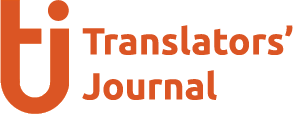
With over 2.8 million language industry professionals, LinkedIn has become more than just a networking tool—it’s an essential platform for anyone in the translation and localization sectors. Whether you’re a seasoned translator, a project manager, or a budding localization expert, LinkedIn offers unparalleled opportunities to connect, grow, and showcase your expertise. In a world where the language industry is constantly evolving, leveraging LinkedIn is no longer optional—it’s a strategic move to stay ahead in the competitive translation business.

In this guide, we’ll walk you through proven strategies to leverage LinkedIn’s features to grow your translation business and build valuable relationships that lead to more projects.
1. Optimizing Your LinkedIn Profile for Translation Clients
Your LinkedIn profile is often the first impression you make on potential clients, so it’s essential to make it shine. Here’s how to ensure your profile stands out and effectively highlights your translation expertise:
- Craft a Professional Headline That Reflects Your Translation Expertise:
Your headline should immediately convey what you do and the value you bring. For example, “Certified English-Spanish Translator | Specializing in Legal and Medical Documents.” This tells clients what languages you specialize in and your field of expertise. - Highlight Your Translation Skills and Language Pairs in the Summary:
In your LinkedIn summary, focus on your key skills and language pairs. Highlight the types of projects you’ve worked on (legal, technical, medical, etc.) and any specialized knowledge you have. This is your chance to tell your story and attract potential clients. - Showcase Previous Translation Projects in Your Experience Section:
Don’t just list job titles—describe specific translation projects and the value you delivered. Be sure to mention any notable clients, the types of content you translated, and the impact your work had. - Add a Professional Profile Picture and a Compelling Banner Image:
Your profile picture should look professional, ideally a headshot with a neutral background. The banner image can reflect your expertise—perhaps a clean design related to language or translation. - Include Relevant Certifications, Education, and Training to Boost Credibility:
Showcase any language certifications, translation courses, or degrees that add to your authority. Include specific details about the certification, and if possible, link to the certifying organizations.
2. Building a Strong LinkedIn Network to Attract Translation Clients
Building a targeted network on LinkedIn can open doors to new clients. Here’s how to strategically expand your LinkedIn connections to attract translation opportunities:
- Connect with Translation Agencies, Companies, and Fellow Translators:
Follow and connect with translation agencies, businesses that may need translation services, and other translators. Engage in meaningful conversations to expand your professional network. - Engage with Posts from Potential Clients and Industry Influencers:
Interact with posts from clients and influencers by commenting and sharing valuable insights. This helps get you noticed and demonstrates your expertise to a broader audience. - Join Relevant LinkedIn Groups for Translators and Language Professionals:
Participate in groups dedicated to translation and language services. This is a great way to stay updated on industry trends, ask questions, and offer your services to others in need. - Send Personalized Connection Requests to Introduce Yourself and Your Services:
When sending a connection request, always include a personalized message. Briefly introduce yourself, mention how you could help, and express your interest in connecting. - Build Relationships by Offering Value and Sharing Useful Content:
Share helpful content related to the translation industry—tips, articles, case studies, etc. This positions you as a knowledgeable professional and attracts clients who value your insights.
3. Using LinkedIn Search to Find Potential Translation Clients
LinkedIn’s powerful search function can help you find businesses or individuals in need of translation services. Here’s how to use it effectively:
- Use Advanced LinkedIn Search Filters to Identify Businesses in Need of Translation Services:
Utilize the search filters to locate potential clients in industries like law, medicine, and technology. Search for roles like “Content Manager” or “Marketing Director” in companies that may require translation services. - Look for Job Postings and Project Announcements Related to Translation:
Regularly check LinkedIn job postings for translation-related roles or project listings. Respond promptly to those that align with your skillset. - Monitor LinkedIn Updates for Content That May Require Translation:
Pay attention to business updates, such as new international expansion or multilingual campaigns, which may indicate a need for translation services. - Create a Targeted Outreach Strategy for Companies and Industries with Translation Needs:
Identify the top industries that frequently require translation services. Develop a tailored outreach plan to introduce yourself to decision-makers in those industries.
4. How to Pitch Your Translation Services on LinkedIn
Pitching your services effectively is key to converting LinkedIn connections into clients. Here’s how to create a compelling pitch:
- Craft a Compelling Message When Reaching Out to Potential Clients:
Tailor each message to the recipient. Keep it short, friendly, and professional. Briefly explain your services and how you can solve their translation needs. Focus on the benefits they’ll receive from working with you. - Focus on Solving the Client’s Translation Problems, Not Just Selling Your Services:
Instead of simply saying, “I’m a translator,” explain how your services will solve their specific issues. For example, “I can help you localize your website content for the Spanish-speaking market.” - Offer a Free Consultation or Sample Translation to Get Your Foot in the Door:
A sample translation or a free consultation can serve as a great way to demonstrate your skills. It gives potential clients a risk-free way to evaluate your work. - Follow Up Professionally and at the Right Time to Nurture Relationships:
After sending your initial message, follow up respectfully. Don’t pressure them but remind them of how you could be of service, particularly after a few weeks when their needs may become more pressing.
5. Leveraging LinkedIn Recommendations and Endorsements for Credibility
LinkedIn recommendations and endorsements can significantly enhance your profile’s credibility. Here’s how to make the most of them:
- Request Recommendations from Past Clients to Showcase Your Work:
Ask your satisfied clients for recommendations that highlight your strengths as a translator. Their testimonials provide social proof and encourage potential clients to trust you. - Endorse Others’ Skills to Increase the Likelihood of Them Endorsing Yours:
Endorsing others for their skills is a great way to build reciprocity. Many users will return the favor and endorse your translation skills in turn. - Highlight Positive Feedback on Your Profile to Build Trust with Potential Clients:
Prominently display recommendations and positive feedback on your profile to demonstrate your reputation. Clients trust peer reviews, and they help build your professional credibility. - Use Testimonials as Social Proof to Showcase Your Value as a Translator:
Displaying glowing client reviews and testimonials in your profile summary or experience section helps build trust with prospects and encourages them to consider your services.
Frequently Asked Questions (FAQ)
1. How do I optimize my LinkedIn profile for attracting translation clients?
To optimize your LinkedIn profile, focus on creating a clear and professional headline that highlights your translation expertise and language pairs. In your summary, mention your skills, specialization, and any certifications or training. Don’t forget to showcase your translation projects in the experience section, add a professional photo, and include relevant endorsements and recommendations from past clients.
2. How can I connect with potential translation clients on LinkedIn?
You can connect with potential clients by engaging with posts from businesses or individuals in industries that require translation services. Join relevant LinkedIn groups, participate in discussions, and share valuable content related to translation. Additionally, send personalized connection requests to introduce yourself and your services to decision-makers in companies that could benefit from translation.
3. What are the best LinkedIn search strategies to find translation clients?
Use LinkedIn’s advanced search filters to locate companies that may need translation services, such as content management roles or marketing positions in international companies. Look for job postings related to translation and monitor company updates that may require translation for new markets or campaigns. You can also search for keywords related to your language pairs and areas of expertise to find potential clients.
4. How should I pitch my translation services on LinkedIn?
When reaching out to potential clients, focus on solving their specific translation needs rather than just selling your services. Craft a personalized message that explains how you can help them, offering a free consultation or a sample translation. Follow up professionally to maintain the relationship and remind them of how you could assist them with future projects.
5. How do LinkedIn recommendations and endorsements help in attracting clients?
LinkedIn recommendations and endorsements build credibility and trust. Positive testimonials from past clients demonstrate your skills and reliability, encouraging potential clients to consider your services. Recommendations serve as social proof of your expertise, while endorsements show that other professionals recognize your skills, making you appear more credible to those viewing your profile.
6. How do I build relationships with potential clients on LinkedIn?
Building relationships on LinkedIn involves engaging with content shared by potential clients and industry influencers. Comment on their posts, share valuable insights, and offer help when appropriate. You can also send personalized connection requests and keep in touch with prospects by sharing relevant articles, tips, or insights related to translation that might be of interest to them.
7. Should I offer a free sample translation to attract clients on LinkedIn?
Yes! Offering a free sample translation or a brief consultation can be a great way to demonstrate your skills and provide value to potential clients. It lowers the risk for them and allows them to assess the quality of your work before committing to a paid project.
8. How often should I update my LinkedIn profile?
It’s important to keep your LinkedIn profile updated regularly. Update it whenever you complete a major project, earn a new certification, or acquire new skills. Regular updates signal to potential clients that you are active, experienced, and committed to your professional growth.
9. What should I do if I don’t receive immediate responses from potential clients?
If you don’t receive immediate responses, be patient and strategic. Continue engaging with their content, send polite follow-up messages, and try connecting with other companies or professionals in your target market. It’s a good idea to also expand your network and continue adding value through your content and interactions.
10. Can LinkedIn help me find translation work beyond freelance projects?
Absolutely! LinkedIn is a great platform for finding full-time or part-time translation roles, project-based work, or contract opportunities. Companies and agencies often post job openings for translators, and you can apply directly through LinkedIn’s job listings.
11. Is it okay to send a connection request to people I don’t know personally?
Yes, it is perfectly fine to send connection requests to people you don’t know personally, especially if they are potential clients or industry professionals. LinkedIn is designed for networking, and many people connect with others they haven’t met yet. However, it’s important to ensure your connection request is relevant and that you are connecting for professional reasons. Always aim to personalize your message and explain why you’d like to connect.
12. Is it appropriate to send a connection request without a note?
While it’s technically possible to send a connection request without a note, it’s always better to include one. A personalized note adds a professional touch, explains why you’re reaching out, and increases the chances of your connection request being accepted. For example, briefly mention how you came across their profile and why you’re interested in connecting, such as offering translation services or discussing potential opportunities.



